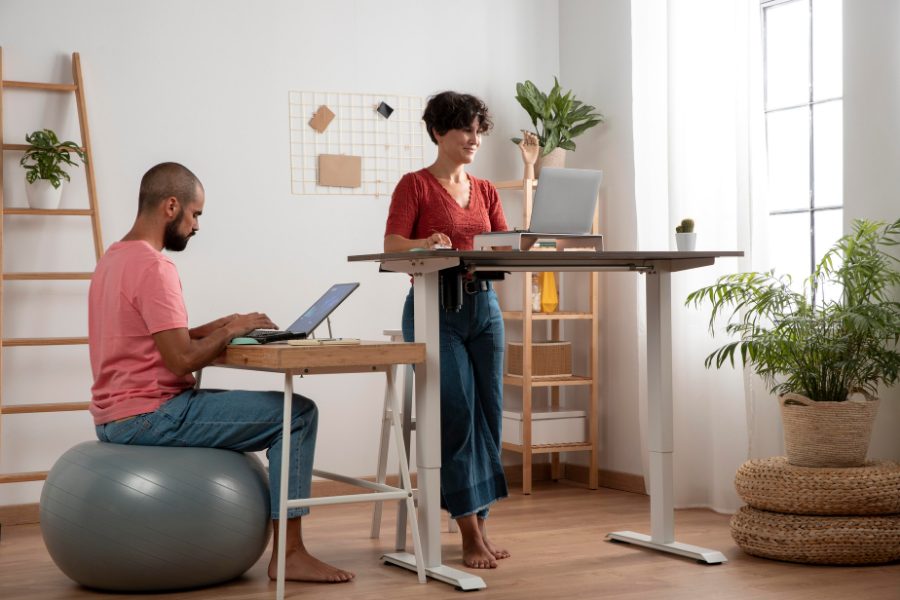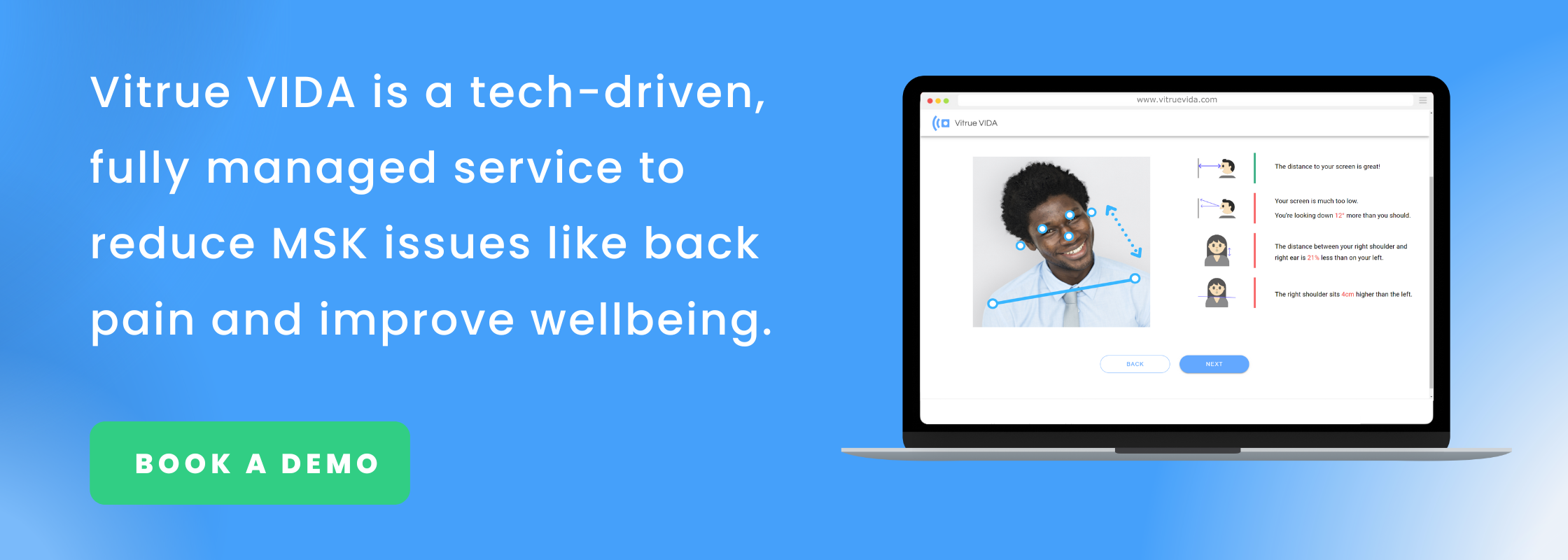
HSE’s latest statistics revealed that 473,000 workers in the UK suffered from work-related musculoskeletal (MSK) injuries like back pain in 2023. In most cases, these injuries could have been prevented with simple ergonomic changes or healthier working habits.
Deloitte’s 2023 Wellbeing at Work survey also revealed that employee wellbeing is at an all time low. Most employees reported that their physical and mental health worsened or stayed the same in the last year. So if 2023 has been a challenging year for you, you’re certainly not alone!
As we step into 2024, it’s important to recognise the impact your workplace can have on your mental and physical wellbeing. 65% of all desk workers are currently suffering with issues like back pain. These issues are most commonly caused by bad posture and poor ergonomics at work. Pain and mental health are intrinsically linked – simple ergonomic changes like repositioning your computer screen can help you avoid developing pain and improve your overall wellbeing.
What is ergonomics?
Ergonomics is all about making sure your workplace is designed for office workers, who typically spend several hours a day working at a desk. It encompasses everything from environmental factors such as temperature and noise, to the physical aspects of a workspace like chairs and screen setup.
Ergonomic practices such as raising your computer screen to eye level, sitting on a chair with back support and using an external keyboard can protect you from developing work-related MSK injuries like neck, back and wrist pain.

5 ergonomic tips to boost wellbeing
A few simple ergonomic changes and workplace habits can make a huge difference to your overall wellbeing. Here are five simple ergonomic tips for a healthy and happy 2024:
1. Adjust your chair to improve your posture
The human body isn’t designed to sit all day. Being in a static position in front of a computer creates tension in your muscles, restricts your joint mobility and ultimately leads to pain. A good ergonomic desk chair can help you adopt good posture and reduce your risk of developing back, neck and shoulder pain.
Ergonomic tip: Choose a chair that supports the natural curve of your spine and add a cushion if you need extra lumbar support. Adjust your seat height so your knees are at 90 degrees with your thighs parallel to the floor. Arm rests help to support your arms and prevent shoulder strain.
2. Position your screen at the correct height
Our exclusive data from tens of thousands of Vitrue VIDA users reveals that having a laptop or monitor stand is a significant factor in whether or not you develop work-related pain. Employees who adjust their screen to the right height with a stand are 2.2x less likely to have neck pain.
Ergonomic tip: Most laptop stands on the market are affordable and enable you to raise your screen to different heights. Raise your laptop or monitor so it sits directly in front of your eyes, at an arm’s length away, to prevent any excess strain on your neck and shoulders.
Did you know? Working at a screen positioned too low can put up to 400% more force on your spine than if your screen was positioned correctly.
3. Use an external keyboard
A surprising number of desk workers rely solely on the in-built keyboard on their laptop, rather than using an external one. This is a significant ergonomic hazard which can put extra pressure on your wrists, upper arms and shoulders.
Ergonomic tip: External keyboards are generally a lot less cramped than the keyboards on laptops, allowing you to adopt a more comfortable typing position and relieve tension in your neck, shoulders and wrists. If you don’t need the number pad on a traditional long keyboard, opt for a smaller model to prevent unnecessary reaching between your keyboard and mouse.
4. Take frequent breaks
Our bodies aren’t designed to sit at a desk all day. It’s important to take regular breaks at work to move around, stretch your muscles and change position. Our exclusive data on pain trends in desk workers revealed that taking more breaks led to a 50% reduction in neck pain in our large cohort analysis.
Ergonomic tip: Vitrue VIDA recommends several techniques like the Pomodoro method to help you incorporate short breaks during the day. Simply set a timer for 25 minutes and when the timer goes off, take a 5 minute break. Then repeat!
5. Sit near a window for maximum natural light
Exposure to natural light during the working day can have a huge impact on your mood, productivity and job satisfaction. 47% of employees reported higher rates of eyestrain and fatigue in working environments with only artificial lighting.
Ergonomic tip: Try to sit near a window to maximise those natural rays! In any case, position your screen to avoid reflections and glare. Check you have decent lighting in your work area to reduce your risk of eyestrain.
These five simple ergonomic tips will help you boost your workplace wellbeing in 2024. Have a happy and healthy New Year!





